Best Practices Articles

A Comprehensive Guide to Top PRM Software Vendors (2024-2025)
What is a PRM software vendor, and why do they matter to businesses today?
A PRM software vendor creates and sells Partner Relationship Management (PRM) software. This tool helps businesses manage their relationships with sales partners, such as resellers, distributors, and referral agents. Imagine a company that wants to sell its products or services to many customers but cannot reach everyone directly.
Instead, it teams up with other businesses (partners) to sell for them. A PRM software vendor offers the tools to help this partnership run smoothly. This allows the leading company and its partners to work together better. They can reach more customers and increase sales.
Supercharge Your Sales: Why a PRM Software Vendor is Your Business's Best Friend
Businesses today actively search for innovative ways to sell more products. Many discover the enormous power of working with partners – companies like resellers, distributors, or individuals who refer new customers. These partnerships significantly expand a company's reach, boost sales faster, and build stronger customer relationships.
Managing all these partnerships by hand can quickly turn into a confusing mess. This leads to wasted time and missed chances. A PRM software vendor comes in here. They provide vital technology to organize, automate, and improve every part of a company's partner program.
With so many options from different PRM software vendors, you might wonder how you pick the right one for your business? This guide looks at PRM. It highlights key features to consider. It also showcases top PRM software vendors. Finally, it offers a plan to help partners succeed.
What Does a PRM Software Vendor Do, and Why Do You Need Their Solution?
At its core, a PRM software vendor provides a central platform to manage and build strong relationships with sales partners. Consider it a special customer management system (CRM) designed explicitly for indirect sales. It empowers businesses to automate key processes, give partners the necessary tools, and clearly see how their partners perform. Without a dedicated PRM solution from a reliable PRM software vendor, companies often face significant problems:
- Confusing Communication: Information scatters across emails, spreadsheets, and different systems, causing misunderstandings and delays.
- Slow Onboarding: Bringing new partners up to speed takes too much time and effort, delaying when they can start selling and making money.
- Blind Spots: Tracking partner performance, registered deals, and the overall money earned through partners becomes incredibly difficult.
- Inconsistent Branding: Partners use old or incorrect branding materials, hurting the company's image.
- Manual Payments: Calculating and giving out commissions and incentives by hand is a long and error-prone process.
- Partner Conflicts: Overlapping sales efforts or unassigned leads frustrate partners.
A well-implemented PRM system from a leading PRM software vendor directly tackles these challenges. It offers a suite of features that empower the leading company and its partners to achieve shared success. A survey found that 52% of companies make over 20% of their revenue from current partnerships, according to WARC. Good PRM solutions support these programs.
Key Features a Top PRM Software Vendor Offers
The features you need depend on your company's size, industry, and partner strategy. Here are the key parts that define a top PRM software vendor's solution:
- Centralized Partner Portal: This acts as the brain of any PRM system. It should be a simple, branded hub. Partners can find everything they need here. This includes sales brochures, marketing materials, training courses, deal registration, and performance reports. An easy-to-use interface is crucial for partners to use and benefit from the system.
- Partner Onboarding & Training: An excellent PRM solution from a PRM software vendor streamlines the onboarding process. It offers automated steps, guided tours, and access to complete training resources. This ensures new partners quickly become productive. Look for solutions that provide customizable learning paths and track certifications.
- Deal Registration & Lead Management: This feature is vital for avoiding conflicts between partners and clearly seeing the sales pipeline. A strong deal registration module allows partners to submit and track opportunities, ensuring they receive proper credit and payment. You must integrate smoothly with your current CRM, like Salesforce or HubSpot. This is important for a full view of customer and partner data.
- Marketing & Sales Enablement: Partners need easy access to updated marketing materials, co-branded content, sales playbooks, and product information. A good PRM software vendor provides a content management system. This system keeps things consistent and helps partners represent your brand well. Features like marketing automation (e.g., email campaigns shared content) further boost partner efforts.
- Performance Tracking & Analytics: To manage effectively, you must measure. A top PRM software vendor provides strong reporting and analytics. It offers insights into partner-generated revenue, how fast deals close, partner engagement levels, and training completion. Customizable dashboards allow you to monitor key performance indicators (KPIs) relevant to your partner program.
- Incentive & Rebate Management: Automating the calculation and distribution of commissions, rebates, and Market Development Funds (MDF) saves significant time and ensures accuracy. Look for flexible systems that handle complex incentive structures and provide transparent partner tracking.
- Communication and Collaboration Tools: The best PRM solutions from PRM software vendors help companies and partners communicate easily. This includes secure messaging, announcement features, and efficiently managing support tickets or sharing updates.
- Integration Capabilities: A PRM system should not work alone. It should work well with your current technology. This includes your CRM, marketing automation tools, and ERP systems. This will help keep data consistent and reduce manual data entry. Two-way data synchronization is critical.
- Scalability & Customization: As your partner program grows, your PRM needs to grow with it. Find solutions that can manage more partners. They should let you customize workflows, dashboards, and branding. This will help match your business processes and partner levels. "The ability to scale a PRM solution is paramount for long-term channel success, as partner ecosystems inherently evolve," notes a Forrester Research report (2024).
- Security & Compliance: Protecting sensitive partner and customer data is essential. Ensure the PRM software vendor follows industry-standard security rules and compliance regulations.
The Landscape of Top PRM Software Vendors (2024-2025)
The PRM market constantly changes, with various PRM software vendors offering compelling solutions. The "best" option depends on what each person needs. However, some players stand out for their outstanding features, strong market presence, and happy customers. Here's a look at some of the top contenders you'll find in 2024-2025:
- ZINFI Unified Partner Management (UPM): People widely recognize ZINFI for its complete and user-friendly platform. It consistently earns high marks for ease of use and customer satisfaction on review sites like G2. ZINFI's UPM platform offers a strong set of tools covering the entire partner journey, from finding and onboarding partners to co-marketing, co-selling, and incentives. They focus on a "Unified" approach to provide a smooth experience across all partner operations. Clients often praise ZINFI for its deep customization options and strong integration capabilities with major CRM systems.
- Impartner PRM: A well-known leader in the PRM field, Impartner provides a strong platform. It is easy to set up and delivers quick value. They focus on partner engagement, deal registration, and marketing automation. This makes them a great choice for businesses that depend on partners to generate revenue.
- Salesforce Partner Relationship Management (PRM) is for organizations that use Salesforce. Their PRM solution is part of Salesforce Experience Cloud, which Salesforce once called Community Cloud. It works well with existing Salesforce data and workflows. It provides a robust, unified option for sales and partner management, especially for larger companies.
- Allbound: Allbound provides a partner portal-focused PRM solution simplifies partner enablement, content delivery, and communication. They prioritize an easy-to-use experience for partners, making accessing resources and engaging with the vendor simpler.
- PartnerStack is known for its focus on partner engagement and growth. It offers a popular platform for SaaS companies and those with affiliate or referral programs. They provide strong tools for tracking partner performance, managing payouts, and fostering a lively partner community.
- ZiftONE: ZiftONE offers an enterprise channel management platform that connects and simplifies sales, marketing, and operations. Their solution helps organizations create and grow complex indirect sales programs. It offers complete tools for managing partners and marketing through channels.
- Mindmatrix: Mindmatrix provides a platform that combines sales and marketing automation with PRM capabilities. They offer features like asset management, lead scoring, and automated processes to improve partner efficiency and overall channel performance.
- Crossbeam: While not a full PRM, Crossbeam is a notable player in the partner ecosystem mapping space. It helps companies share sales pipeline data safely with partners. This way, they can find overlaps and co-selling chances. It is a helpful tool for any PRM strategy.
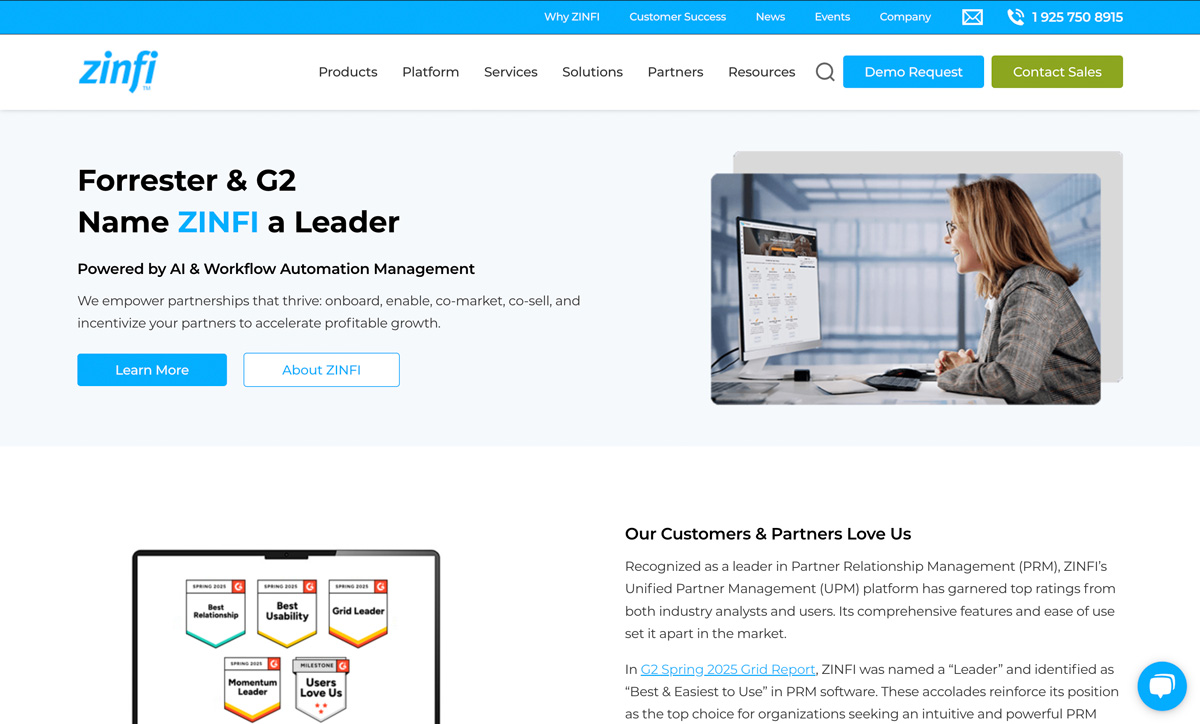
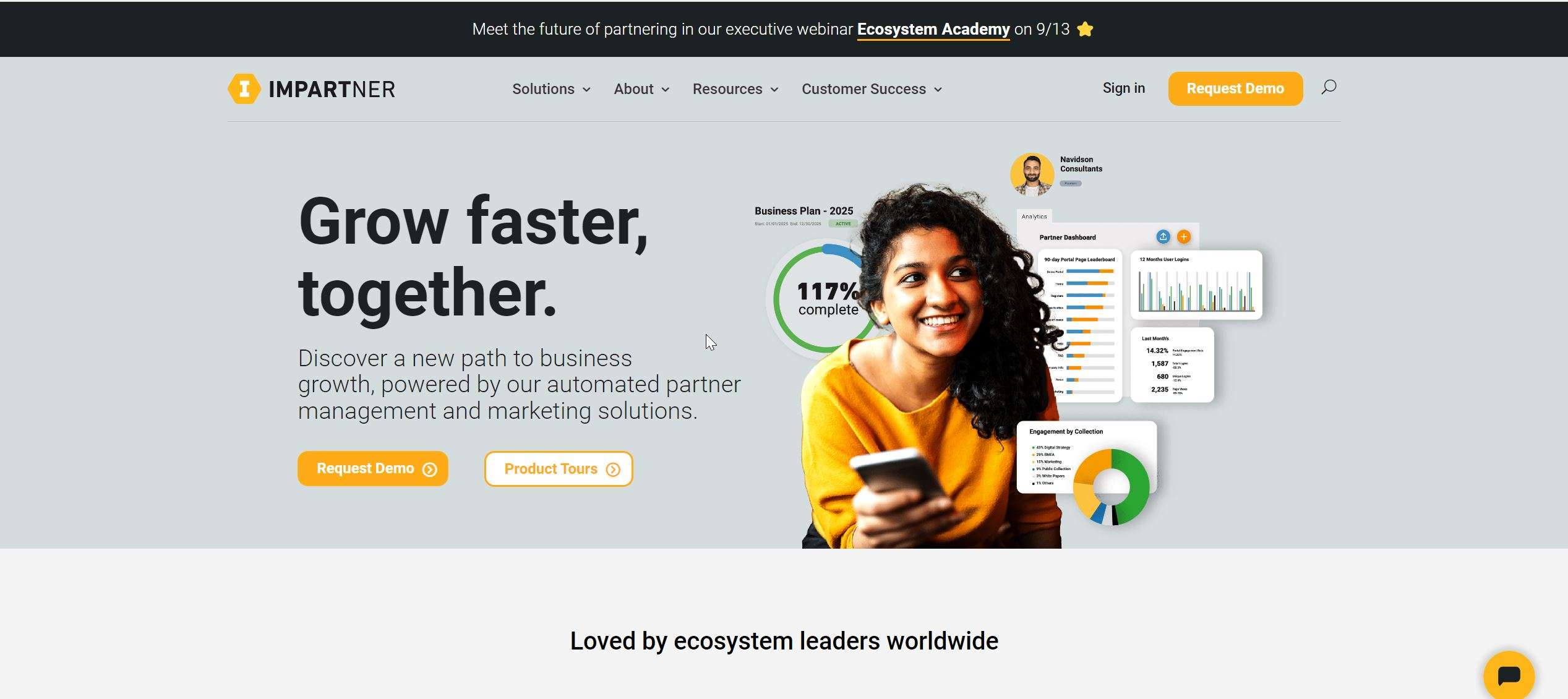
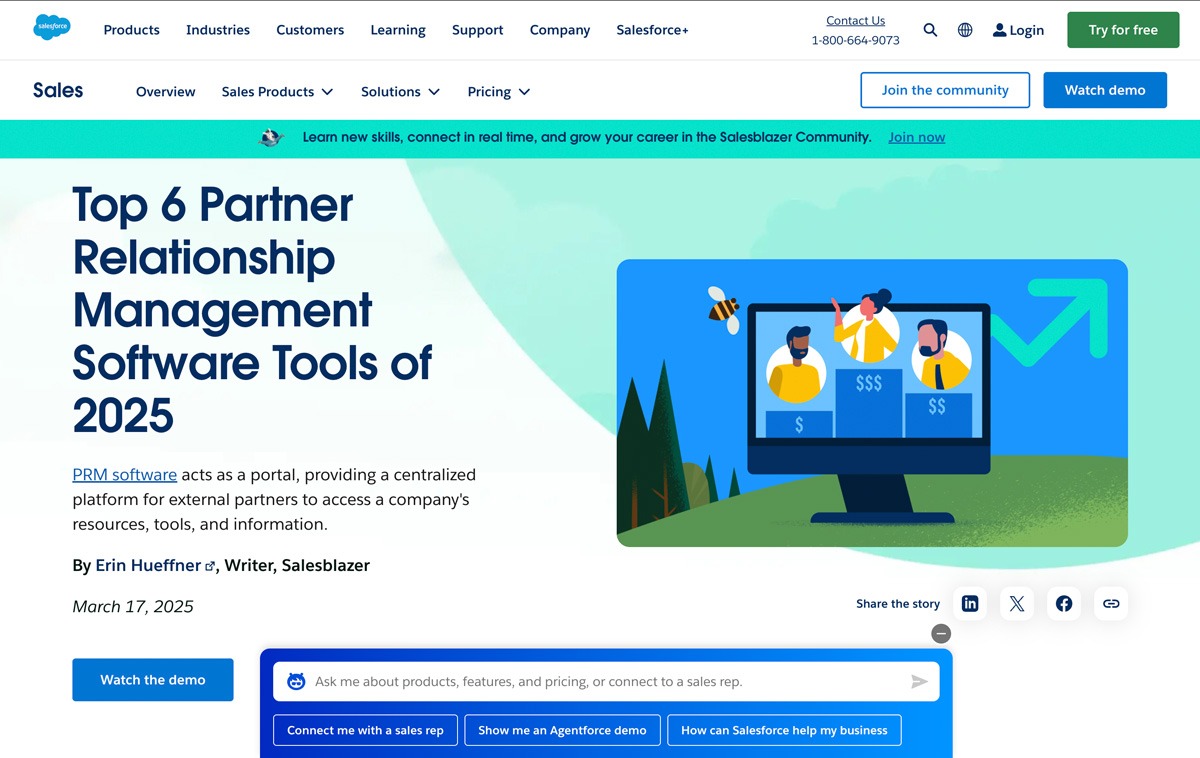
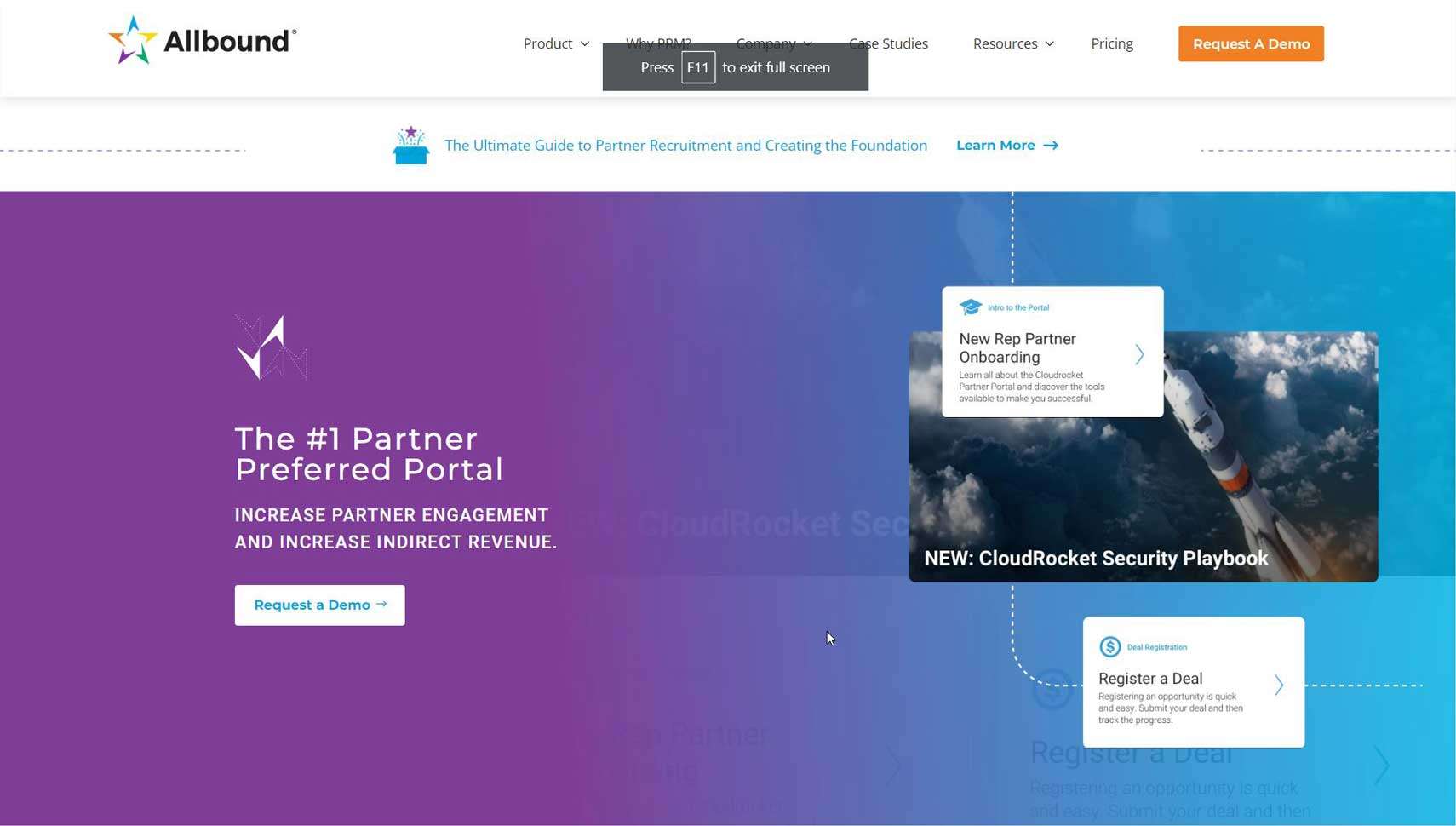
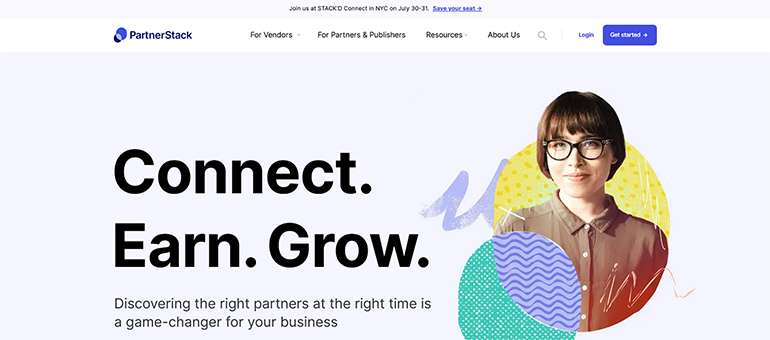
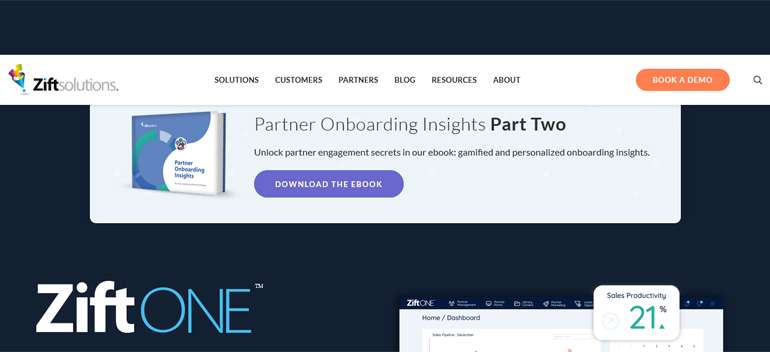
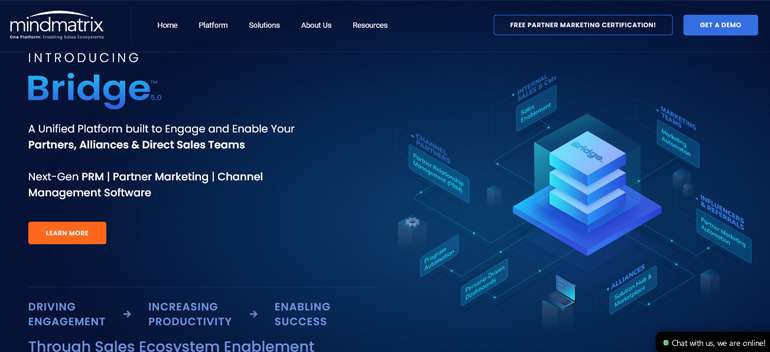
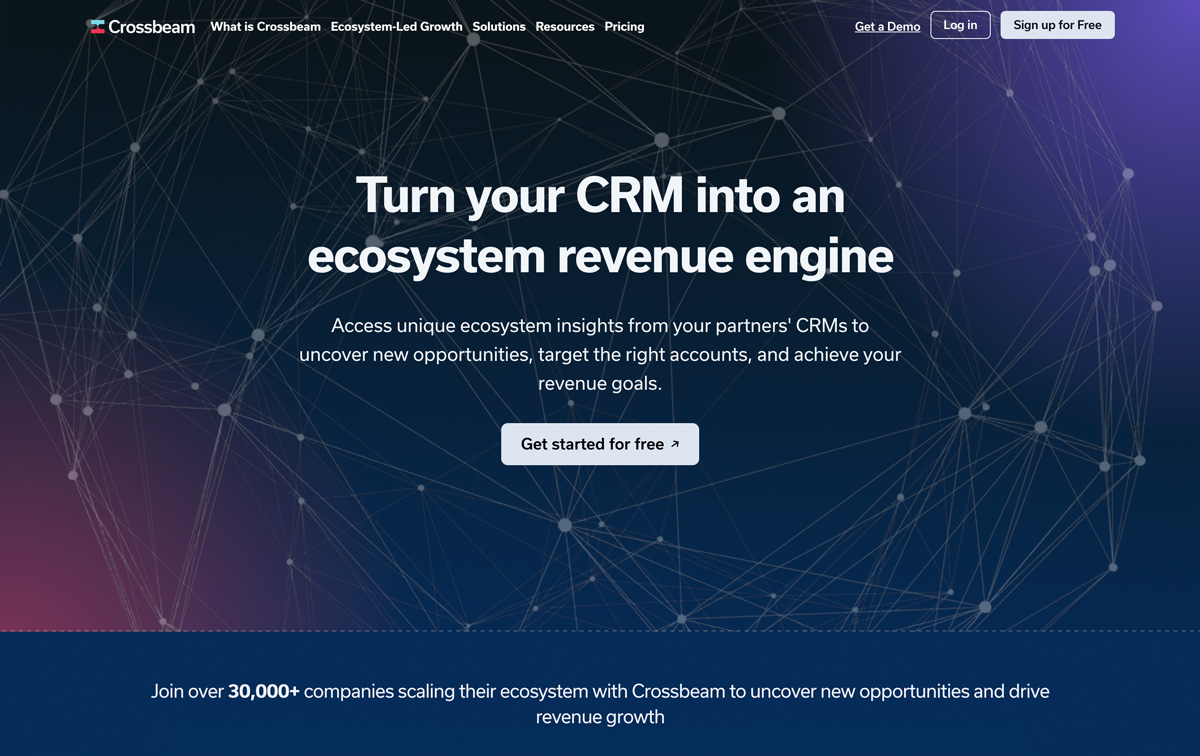
When looking at these PRM software vendors, ask for demos. Read customer reviews on sites like G2 or PeerSpot. Most importantly, make sure their services match your needs and budget.
ZINFI's PartnerOps Framework: A Smart Way to Achieve Partner Success
Choosing a PRM solution is not just about picking software; it involves adopting a strategic method that optimizes your entire partner journey. ZINFI supports a structured approach called its PartnerOps Framework. Inspired by Revenue Operations (RevOps) principles, PartnerOps provides a disciplined way to manage and optimize every phase of the partner lifecycle. It combines data, tools, and cross-departmental workflows to ensure consistent, predictable revenue outcomes across your partner network. The ZINFI PartnerOps Framework outlines seven crucial pillars:
- Strategize: Before any action, clearly define your partner program's goals. This involves identifying ideal partner types, establishing clear market entry strategies, setting realistic growth targets, and determining the appropriate partner levels and payment models. A clear strategy provides the roadmap for your entire partner initiative.
- Recruit: Once you set the strategy, the focus shifts to attracting the right partners. This involves using various channels to reach potential partners, showcasing your program's value, and implementing efficient application and qualification processes. A PRM platform from a PRM software vendor can automate parts of this recruitment, making it scalable.
- Onboard: The onboarding phase is critical for setting new partners up for success. This pillar focuses on providing structured training, access to essential resources, and guiding partners through initial setup and integration. An automated, self-service onboarding portal within a PRM significantly reduces the time and effort required.
- Enable: Helping partners means giving them the tools, knowledge, and support they need to sell and market your products well. This includes ongoing training, readily available sales materials, technical documents, competitor information, and access to dedicated support channels. A robust PRM's content management and learning management system (LMS) features are vital here.
- Co-Market: Joint marketing efforts are key to generating demand and leads through your partners. This pillar provides partners with marketing materials they can brand together. It includes shared content, campaign templates, and marketing development funds (MDF) for local campaigns. PRM's through-channel marketing automation (TCMA) capabilities are instrumental in this phase.
- Co-Sell: Here, partners actively work with your internal sales team to close deals. It includes distributing leads, registering deals, managing joint sales pipelines, and collaborative sales efforts. Seamless integration between your PRM and CRM ensures direct and indirect sales teams have a unified view of opportunities and can collaborate effectively.
- Incentivize & Accelerate: Motivating partners through clear and attractive incentive programs is crucial for consistent performance. This final pillar involves managing commission structures, rebate programs, SPIFFs (Sales Performance Incentive Funds), and MDF tracking. It's not just about incentives. It's also about looking at performance data. This helps us find the best partners. We can see where they can improve. Then, we can create strategies to help them grow and increase their revenue.
By adopting this holistic PartnerOps Framework, organizations move beyond simply managing partners; they optimize their partner ecosystem for predictable and scalable growth. It emphasizes a data-driven approach, leveraging PRM technology to automate manual tasks, gain actionable insights, and foster stronger, more productive partner relationships.
What to Expect When Implementing a PRM Solution
Implementing a new PRM system is a significant undertaking. Understanding the typical timeline and critical success factors is crucial for a smooth rollout.
Average Implementation Time: The time it takes to set up PRM software can vary a lot. Basic setups may take a few weeks, while complex enterprise deployments can take several months. Factors influencing this include:
- Scope and Complexity: The number of features you plan to implement initially, the complexity of your partner programs, and the degree of customization needed will impact the timeline.
- Integrations: More integrations needed with existing systems (CRM, ERP, marketing automation) will likely lengthen the setup and testing phases.
- Data Migration: If you move a large amount of partner data from old systems, this adds considerable time.
- Internal Resources: The availability and dedication of your internal team (IT, channel management, marketing) to the implementation project play a significant role.
- Vendor Support: The level of support and expertise the PRM software vendor provides during implementation can accelerate or delay the process.
Some basic PRM systems launch in weeks, but a typical enterprise-level PRM implementation takes two to six months, including integration and training. You must set realistic expectations and plan for phased rollouts if necessary.
Key Success Factors for Implementation:
- Clear Objectives: Define what you want to achieve with the PRM system before you begin.
- Stakeholder Buy-in: Ensure all relevant departments (Sales, Marketing, IT, Finance) are involved and supportive.
- Phased Approach: Consider rolling out essential features first, then introducing more advanced functionalities gradually.
- Thorough Planning: Develop a detailed project plan with timelines, responsibilities, and key milestones.
- Data Cleanliness: Ensure your existing partner data is clean and accurate before migration.
- Training & Adoption: Invest in comprehensive training for your internal teams and partners to maximize user adoption.
- Change Management: Communicate clearly and regularly with partners about the new system and its benefits.
Maximizing Your ROI from a PRM Software Vendor Investment
A PRM solution from a PRM software vendor is an investment. Like any investment, you realize its value through strategic use and continuous improvement. To maximize your return on investment (ROI):
- Focus on Partner Experience: An intuitive and valuable partner portal will drive higher adoption rates and engagement. Make it easy for partners to find what they need and achieve success.
- Automate, Automate, Automate: Leverage the automation capabilities of your PRM to reduce manual tasks for both your team and your partners. This frees up resources for more strategic initiatives.
- Leverage Data for Insights: Regularly analyze the performance data your PRM provides. Identify top-performing partners, uncover trends, and make data-driven decisions to refine your partner strategy.
- Provide Ongoing Enablement: The market and your products evolve. Ensure partners have continuous access to updated training, sales tools, and marketing resources.
- Foster Communication & Community: Use the PRM to build a strong sense of community among your partners. Facilitate communication, share best practices, and celebrate successes.
- Align with Your Business Goals: Evaluate whether your PRM strategy and execution align with your overarching business objectives for partner growth.
Conclusion
In the competitive landscape of 2024-2025, a well-chosen and effectively used PRM solution from a reliable PRM software vendor is no longer a luxury but a strategic necessity for any business aiming to grow through indirect channels. By understanding the core features, evaluating the top PRM software vendors, and embracing a holistic framework like ZINFI's PartnerOps, you can select the right platform to manage your partner relationships, accelerate your partner growth, and unlock significant revenue potential. The future of profitable growth lies in empowered and engaged partner ecosystems, and the right PRM software vendor is your key to building them.
Best Practices Guidebook
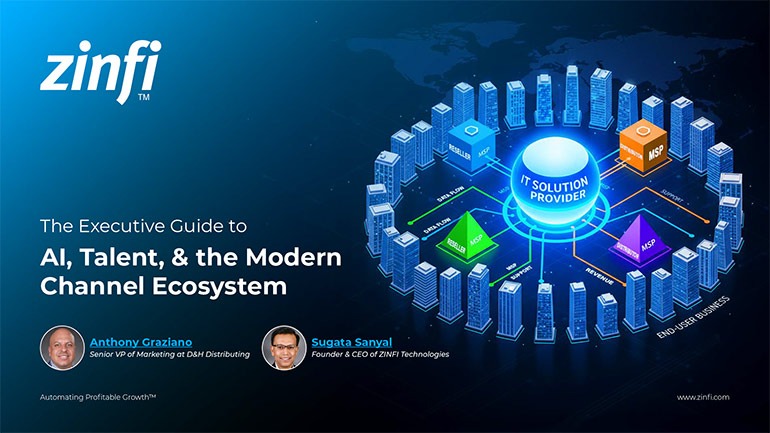 Modernizing Channel Marketing: AI and Ecosystem Enablement Best Practices
Modernizing Channel Marketing: AI and Ecosystem Enablement Best PracticesDownload for FREE
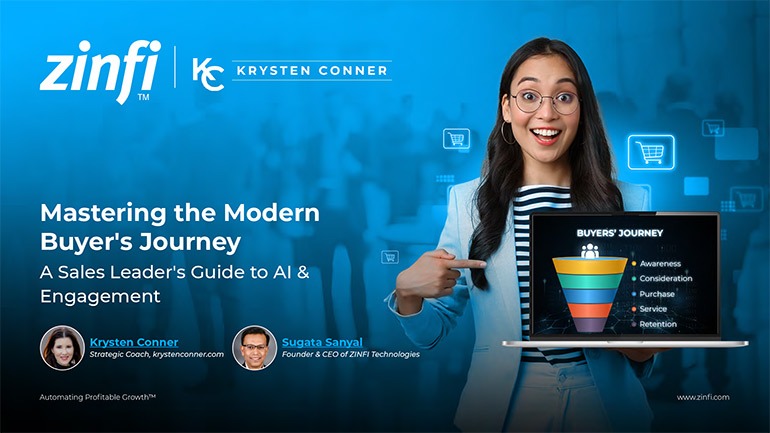 The Channel’s Shift to Partner-Led With AI Best Practices
The Channel’s Shift to Partner-Led With AI Best PracticesDownload for FREE
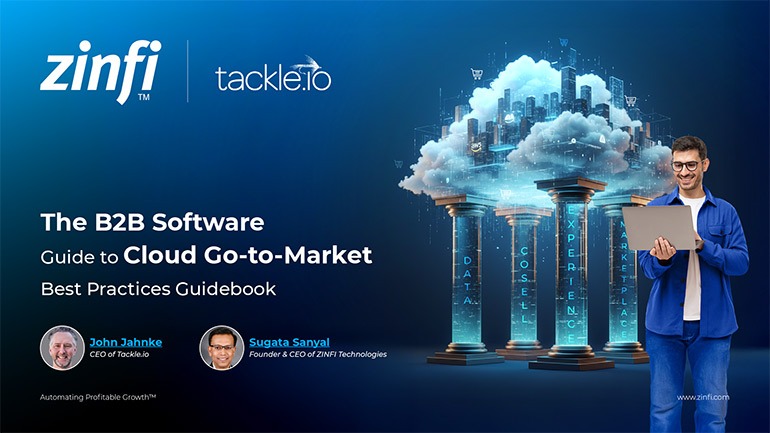 Hyperscalers, ISVs, and AI: Shaping the Future of B2B Software Distribution
Hyperscalers, ISVs, and AI: Shaping the Future of B2B Software DistributionDownload for FREE
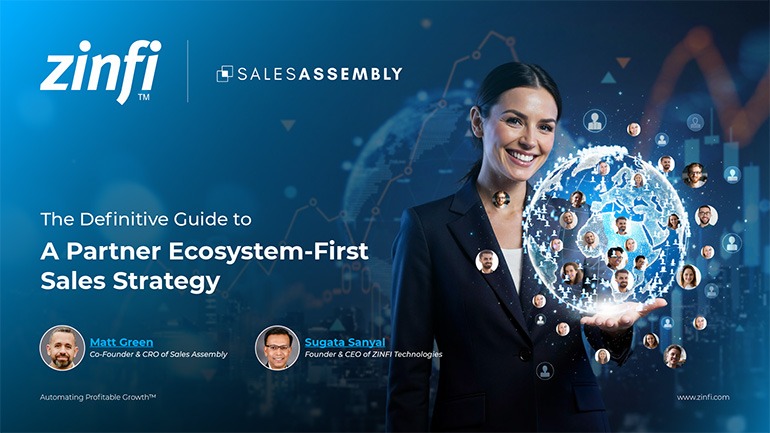 Definitive Guide to a Partner Ecosystem-First Sales Strategy
Definitive Guide to a Partner Ecosystem-First Sales StrategyDownload for FREE
 The Partner-Led Digital and AI Transformation Best Practices
The Partner-Led Digital and AI Transformation Best PracticesDownload for FREE
 Startup Talent Recruitment: Hiring Missionaries, Not Mercenaries
Startup Talent Recruitment: Hiring Missionaries, Not MercenariesDownload for FREE
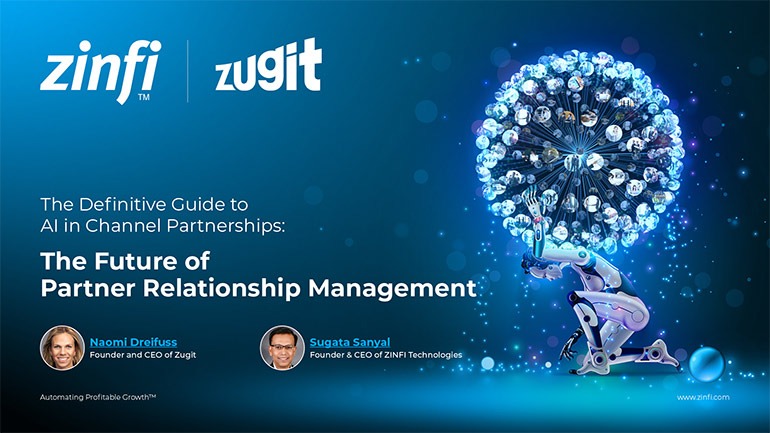 The Future of Partner Relationship Management with AI in Partnerships
The Future of Partner Relationship Management with AI in PartnershipsDownload for FREE
 Cybersecurity for the 99%: Strategies from the Frontline
Cybersecurity for the 99%: Strategies from the FrontlineDownload for FREE
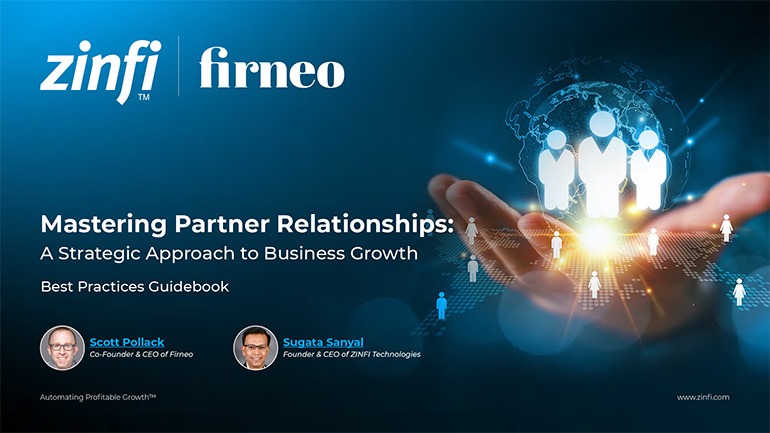 Mastering Partner Relationships: A Strategic Approach to Business Growth
Mastering Partner Relationships: A Strategic Approach to Business GrowthDownload for FREE
 Mastering Partner Relationship Management: Keys to SaaS Channel Success
Mastering Partner Relationship Management: Keys to SaaS Channel SuccessDownload for FREE
 Navigating the AI Revolution: Guide for Partners in the Microsoft Ecosystem
Navigating the AI Revolution: Guide for Partners in the Microsoft EcosystemDownload for FREE
 Mastering the Modern Buyers Journey: Sales Leader’s Guide to AI & Engagement
Mastering the Modern Buyers Journey: Sales Leader’s Guide to AI & EngagementDownload for FREE










